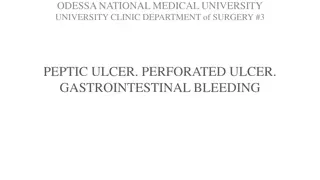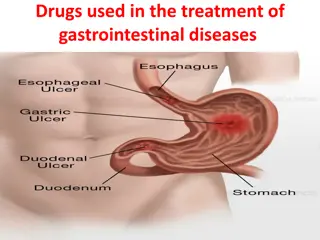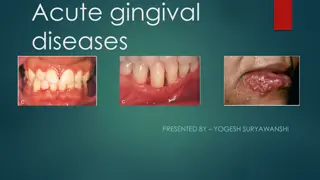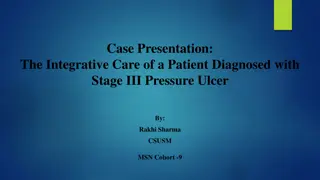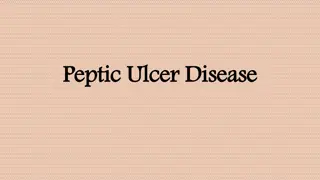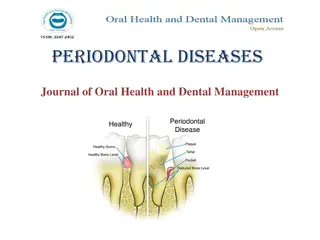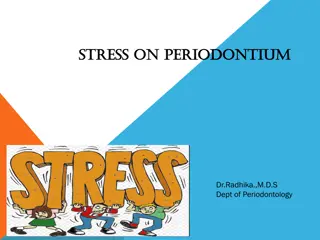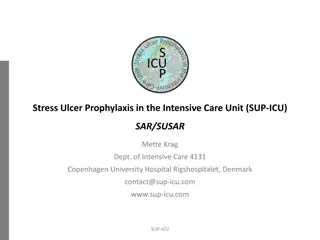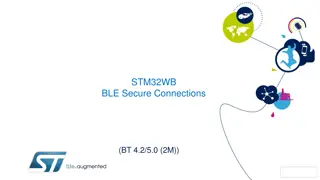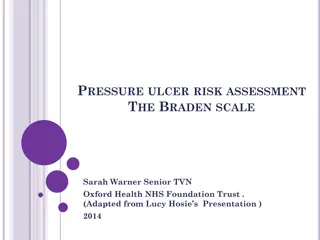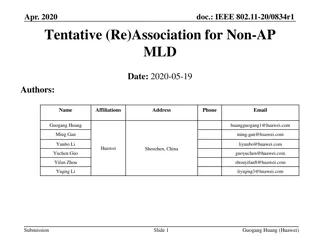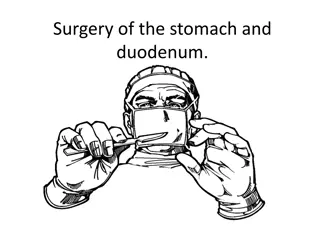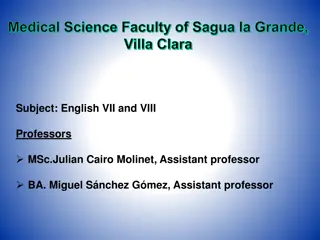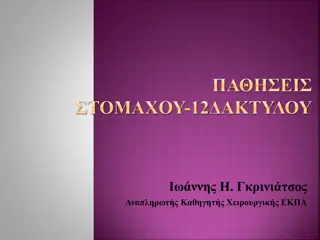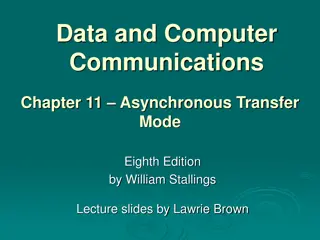Association Between Peptic Ulcer and Periodontitis: Insights and Connections
Previous studies have suggested a potential link between peptic ulcer disease (PUD) and periodontitis. PUD affects the gastrointestinal mucosa, with key risk factors being H. pylori infection and NSAID use, while periodontitis is an inflammatory disease affecting the tissues around teeth. Understanding the pathophysiology of these conditions and their association could provide valuable insights for diagnosis and treatment.
Download Presentation

Please find below an Image/Link to download the presentation.
The content on the website is provided AS IS for your information and personal use only. It may not be sold, licensed, or shared on other websites without obtaining consent from the author. Download presentation by click this link. If you encounter any issues during the download, it is possible that the publisher has removed the file from their server.
E N D
Presentation Transcript
Association Association between Peptic Ulcer between Peptic Ulcer and Periodontitis and Periodontitis Amjad Awad Albarasi 2877 Supervised by Dr .Zainab Almograbi
2 Objectives Objectives Definition of Periodontitis? Definition of Peptic Ulcer Disease pathophysiology of Peptic Ulcer Disease Previous Studies on association of Periodontitis with Peptic Ulcer Disease
Introduction Introduction 3 Previous studies have suggested that peptic ulcer disease (PUD) including gastric and duodenal ulcers might be associated with periodontitis
4 Periodontitis Periodontitis
What is What is Periodontitis Periodontitis ? ? 5 Periodontitis (PD) is defined as an inflammatory disease of the supporting tissues surrounding the teeth .Inflammatory periodontal disease results from a complex interaction between the subgingival biofilm and the host immune inflammatory events
7 Peptic Ulcer Peptic Ulcer
Peptic Ulcer Disease Peptic Ulcer Disease 8 Peptic ulcer disease (PUD) is a disease located in the gastric or duodenal part of the gastrointestinal tract that mainly involves the mucosa layer. The two main risk factors for PUD are Helicobactor pylori (H. pylori) infection and medication consumption, especially of nonsteroid anti-inflammatory drugs (NSAIDs)
Pathophysiology Pathophysiology
Pathophysiology Pathophysiology 10 H.Pylori H.Pylori NSAIDs NSAIDs Inhibition of COX-1 in the gastrointestinal tract leads to a reduction of prostaglandin secretion and its cytoprotective effects in gastric mucosa. This increases the susceptibility to mucosal injury. cyclooxygenase H. pylori is a Gram-negative bacterium that colonizes mainly in the gastric mucosa and its presence has been universally associated with gastritis, peptic mucosa-associated tissue lymphoma chronic and lymphoid therefore ulcers,
Protective vs. Hostile Factors Protective vs. Hostile Factors Excessive gastric acid secretion is only one factor in the pathogenesis of peptic ulcer 11 disease. Decreased mucosal defense against gastric acid is another cause. The integrity of the upper gastrointestinal tract is dependent upon the balance between hostile factors and protective factors
Previous Studies Previous Studies
Previous Studies Previous Studies 13 Chart the chronic inflammation which contributed to periodontitis is associated with multiple systemic diseases including diabetes mellitus , rheumatoid arthritis ,Many studies have mentioned that the periodontal reservoir harvested H. pylori and caused inflammation, which induced PD. Some studies have shown that the presence of H. pylori in dental plaque via different detection methods might be a possible source of infection and reinfection of the stomach
14 H. pylori infection plays a crucial role in the pathogenesis of PUD. H. pylori infection is involved in various gastroduodenal pathologies, and evokes the production of proinflammatory interleukin-1beta, leading to the reduction of blood flow to the gastroduodenal tract and increasing the risk of peptic ulcers. H. pylori can colonize not only in the stomach, but also in the oral cavity. The oral cavity may be a reservoir for H. pylori and causing periodontal disease
Conclusion Conclusion 15 A positive association between PUD and PD has been found . The results of many studies had showed that the clinical value for both dental and gastroenterological practitioners, suggesting a newer treatment consideration for PUD.
References References 16 1. Al Asqah, M., Al Hamoudi, N., Anil, S., Al jebreen, A. and Al- hamoudi, W., 2022. Is the presence ofHelicobacter pyloriin the Dental Plaque of Patients with Chronic Periodontitis a Risk Factor for Gastric Infection. 2. Yu, H., Chen, T., Wei, C. and Chang, Y., 2022. Association between Peptic Ulcer Disease and Periodontitis: A Nationwide Population-Based Case-Control Study in Taiwan.
Thank You Thank You




